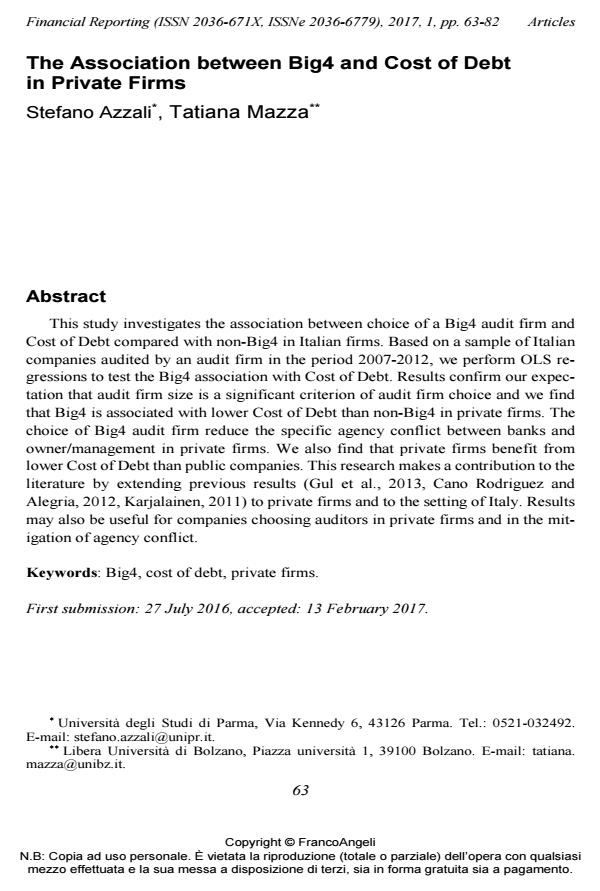The Association between Big4 and Cost of Debt in Private Firms
Journal title FINANCIAL REPORTING
Author/s Stefano Azzali, Tatiana Mazza
Publishing Year 2017 Issue 2017/1
Language English Pages 20 P. 63-82 File size 263 KB
DOI 10.3280/FR2017-001003
DOI is like a bar code for intellectual property: to have more infomation
click here
Below, you can see the article first page
If you want to buy this article in PDF format, you can do it, following the instructions to buy download credits

FrancoAngeli is member of Publishers International Linking Association, Inc (PILA), a not-for-profit association which run the CrossRef service enabling links to and from online scholarly content.
This study investigates the association between choice of a Big4 audit firm and Cost of Debt compared with non-Big4 in Italian firms. Based on a sample of Italian companies audited by an audit firm in the period 2007-2012, we perform OLS regressions to test the Big4 association with Cost of Debt. Results confirm our expectation that audit firm size is a significant criterion of audit firm choice and we find that Big4 is associated with lower Cost of Debt than non-Big4 in private firms. The choice of Big4 audit firm reduce the specific agency conflict between banks and owner/management in private firms. We also find that private firms benefit from lower Cost of Debt than public companies. This research makes a contribution to the literature by extending previous results (Gul et al., 2013, Cano Rodriguez and Alegria, 2012, Karjalainen, 2011) to private firms and to the setting of Italy. Results may also be useful for companies choosing auditors in private firms and in the mitigation of agency conflict.
Keywords: Big4, cost of debt, private firms.
- The Italian depreciation suspension policy during the COVID-19 pandemic: consequences on private firms’ borrowing capacity Marco Maria Mattei, Matteo Merlo, Eleonora Monaco, in Accounting in Europe /2023 pp.166
DOI: 10.1080/17449480.2023.2174444
Stefano Azzali, Tatiana Mazza, The Association between Big4 and Cost of Debt in Private Firms in "FINANCIAL REPORTING" 1/2017, pp 63-82, DOI: 10.3280/FR2017-001003